This article was co-authored by Siddharth Tambar, MD. Dr. Siddharth Tambar, MD is a board certified rheumatologist at Chicago Arthritis and Regenerative Medicine in Chicago, Illinois. With over 19 years of experience, Dr. Tambar specializes in Regenerative Medicine and Rheumatology, with a focus on platelet rich plasma and bone marrow derived stem cell treatments for arthritis, tendinitis, injuries, and back pain. Dr. Tambar holds a BA in Economics from State University of New York at Buffalo. He earned his MD from State University of New York at Syracuse. He completed his Internship, Residency in Internal Medicine, and his Rheumatology Fellowship at Northwestern Memorial Hospital. Dr Tambar is board certified in both rheumatology and internal medicine. He also holds Musculoskeletal Ultrasound Diagnostic and Interventional certifications from the American College of Rheumatology and the American Institute of Ultrasound in Medicine.
There are 13 references cited in this article, which can be found at the bottom of the page.
wikiHow marks an article as reader-approved once it receives enough positive feedback. In this case, 97% of readers who voted found the article helpful, earning it our reader-approved status.
This article has been viewed 480,660 times.
Gout attacks are so painful that they may wake you up at night. It occurs when urate crystals build up on your joints. Most often it happens in the big toe, but other joints in the feet and hands may be affected. The joints will be painful and inflamed, and the attack can last 3-7 days.[1] [2] The most effective way to treat gout is using medications recommended by your doctor, but you can complement that with home treatments to manage the pain and lifestyle changes to lessen the chances of future attacks.[3]
Steps
Treating the Pain at Home
-
1
-
2Soothe the joint by applying ice.[6] This will help reduce inflammation and take the edge off the pain.
- Apply ice for 20 minutes and then give your skin time to warm up. This will prevent the cold from damaging your skin.
- If you do not have ice available, you can use a package of frozen peas or corn.
- Always wrap the ice or frozen vegetables in a thin towel so the ice isn’t applied directly onto your skin.
Advertisement -
3Try over-the-counter nonsteroidal anti-inflammatory drugs. These drugs may help reduce the inflammation and pain. Take them immediately during the attack and for two days afterwards.[7]
- Possible medications include ibuprofen (Advil, Motrin IB) and naproxen sodium (Aleve).
- These medications are not recommended for people with stomach ulcers or bleeding, kidney problems, or blood pressure conditions.
- Don’t take aspirin. It can increase your uric acid levels.[8]
- If you are currently on other medications, consult your doctor to avoid any possible interaction effects.
Reducing Gout Attacks with Lifestyle Changes
-
1Make dietary changes to lower your intake of purines.[9] When you digest purines, your body produces uric acid which can build up into urate crystals in your joints. By reducing the amount of purines in your diet you lower the amount of purines your body must process.[10]
- Eat less red meat like steaks.
- Don’t eat gamey meats like rabbit, pheasant, and venison.
- Avoid organ meats like liver, kidneys, heart, and sweetbreads.
- Reduce your seafood intake, especially caviar and shellfish like mussels, crab and shrimp. You should also steer clear of oily fish like sardines, anchovies, mackerel, sprats, whitebait, herring, and trout.
- Yeast and meat extracts are also high in purines. This includes marmite, bovril, and many commercially manufactured gravies.
- Low-fat dairy products may decrease your risk of gout attacks.
-
2
-
3
-
4Drink lots of water to promote healthy kidney function. Your kidneys are crucial for producing urine and getting rid of uric acid through your urine.[15]
- The amount of water you need will vary depending on your body size, activity levels, and the climate you live in. But you should drink at least eight glasses per day.[16]
- Once you are thirsty, you are already dehydrated and should drink quickly. If you urine infrequently and pass dark or cloudy urine, those are signs that you may be dehydrated.
-
5Exercise regularly. This will improve your health overall and make you feel good.
- Aim for about 30 minutes of moderate exercise, like walking, or 15 minutes of more strenuous exercise, like running, five days a week.[17]
- Swimming is a great way to get exercise without putting stress on joints that might be hurting.
-
6Lose weight if you are overweight. However, it is important to follow a healthy, sustainable dieting plan.
- Using crash diets that aim to make people lose lots of weight quickly are often high in protein and low in carbohydrates. These diets are likely to be high in purines and may aggravate your gout.
-
7Try vitamin C supplements. Vitamin C helps uric acid be excreted through your kidneys into your urine, and may be protective against gout.[18]
- Talk to your doctor before adding supplements to make sure it is right for you.
- Vitamin C only reduces uric acid a little bit, so while it may help prevent new attacks, it is unlikely to be a cure.
-
8Drink coffee. Both caffeinated and decaf coffee may help reduce uric acid levels. However, this evidence is tenuous because studies have not been able to identify how this might be occurring.
Knowing When to See a Doctor
-
1Go to a doctor if this is your first attack. Gout can damage joints and it is best to begin treatment as soon as possible. This will also help reduce your pain as quickly as possible.[19]
- Symptoms may include severe pain, inflammation, and redness in the affected joint for several hours and less severe pain lasting for days or weeks afterwards. The hand and foot joints are affected most often.[20]
- While gout can be managed with lifestyle changes, treatment usually requires medications.
- See a doctor immediately if your gout attack is associated with a fever or if the joint is hot. These symptoms may indicate that you have an infection that needs quick attention.[21]
-
2Discuss the different medications available to treat gout. Your doctor will help you come up with a treatment plan that is tailored to your needs and your medical history. Your doctor may prescribe:[22]
- Nonsteroidal anti-inflammatory drugs. If over-the-counter drugs were ineffective and managing your pain, the doctor can describe something stronger.
- Colchicine. This drug decreases the inflammatory reaction of the joint lining in response to the crystals.
- Corticosteroids. These medications may be given as an injection directly into the joint for fast relief and may be especially helpful for those who cannot tolerate NSAIDs. However, these corticosteroids can’t be taken long-term.
- If you have a history of gout, your doctor may prescribe medications to reduce your uric levels by either reducing the amount of uric acid your body produces or by increasing the amount that your body excretes.[23]
-
3Factor in your risk for future attacks when deciding a course of action. Some people are more prone to gout than others. Factors that raise someone’s risk include:[24]
- A diet with lots of meat, seafood, sweet drinks, and beer.
- Being overweight.
- High blood pressure, diabetes, metabolic conditions, heart or kidney disease.[25]
- Taking certain medications against hypertension, anti-rejection drugs after a transplant, or aspirin.
- A family history of gout.
- Having undergone surgery or sustaining an injury.
- Men are more likely than women to have gout, though women’s risks increase after menopause.
Expert Q&A
-
QuestionWhat is the fastest way to get rid of gout?
 Siddharth Tambar, MDDr. Siddharth Tambar, MD is a board certified rheumatologist at Chicago Arthritis and Regenerative Medicine in Chicago, Illinois. With over 19 years of experience, Dr. Tambar specializes in Regenerative Medicine and Rheumatology, with a focus on platelet rich plasma and bone marrow derived stem cell treatments for arthritis, tendinitis, injuries, and back pain. Dr. Tambar holds a BA in Economics from State University of New York at Buffalo. He earned his MD from State University of New York at Syracuse. He completed his Internship, Residency in Internal Medicine, and his Rheumatology Fellowship at Northwestern Memorial Hospital. Dr Tambar is board certified in both rheumatology and internal medicine. He also holds Musculoskeletal Ultrasound Diagnostic and Interventional certifications from the American College of Rheumatology and the American Institute of Ultrasound in Medicine.
Siddharth Tambar, MDDr. Siddharth Tambar, MD is a board certified rheumatologist at Chicago Arthritis and Regenerative Medicine in Chicago, Illinois. With over 19 years of experience, Dr. Tambar specializes in Regenerative Medicine and Rheumatology, with a focus on platelet rich plasma and bone marrow derived stem cell treatments for arthritis, tendinitis, injuries, and back pain. Dr. Tambar holds a BA in Economics from State University of New York at Buffalo. He earned his MD from State University of New York at Syracuse. He completed his Internship, Residency in Internal Medicine, and his Rheumatology Fellowship at Northwestern Memorial Hospital. Dr Tambar is board certified in both rheumatology and internal medicine. He also holds Musculoskeletal Ultrasound Diagnostic and Interventional certifications from the American College of Rheumatology and the American Institute of Ultrasound in Medicine.
Board Certified Rheumatologist I recommend you rest the joint that's affected and use ice and anti-inflammatories to reduce swelling. You should also talk to your doctor to see if prescription medication may be necessary to treat the gout itself.
I recommend you rest the joint that's affected and use ice and anti-inflammatories to reduce swelling. You should also talk to your doctor to see if prescription medication may be necessary to treat the gout itself. -
QuestionHow many Aleve should I take for relief?
 Chris M. Matsko, MDDr. Chris M. Matsko is a retired physician based in Pittsburgh, Pennsylvania. With over 25 years of medical research experience, Dr. Matsko was awarded the Pittsburgh Cornell University Leadership Award for Excellence. He holds a BS in Nutritional Science from Cornell University and an MD from the Temple University School of Medicine in 2007. Dr. Matsko earned a Research Writing Certification from the American Medical Writers Association (AMWA) in 2016 and a Medical Writing & Editing Certification from the University of Chicago in 2017.
Chris M. Matsko, MDDr. Chris M. Matsko is a retired physician based in Pittsburgh, Pennsylvania. With over 25 years of medical research experience, Dr. Matsko was awarded the Pittsburgh Cornell University Leadership Award for Excellence. He holds a BS in Nutritional Science from Cornell University and an MD from the Temple University School of Medicine in 2007. Dr. Matsko earned a Research Writing Certification from the American Medical Writers Association (AMWA) in 2016 and a Medical Writing & Editing Certification from the University of Chicago in 2017.
Family Medicine Physician I would follow the instructions on the box. You can take up to 550 mg of naproxen sodium orally twice a day.
I would follow the instructions on the box. You can take up to 550 mg of naproxen sodium orally twice a day. -
QuestionI can't walk because of gout the my knee and lower foot hurts. What should I do?
 Chris M. Matsko, MDDr. Chris M. Matsko is a retired physician based in Pittsburgh, Pennsylvania. With over 25 years of medical research experience, Dr. Matsko was awarded the Pittsburgh Cornell University Leadership Award for Excellence. He holds a BS in Nutritional Science from Cornell University and an MD from the Temple University School of Medicine in 2007. Dr. Matsko earned a Research Writing Certification from the American Medical Writers Association (AMWA) in 2016 and a Medical Writing & Editing Certification from the University of Chicago in 2017.
Chris M. Matsko, MDDr. Chris M. Matsko is a retired physician based in Pittsburgh, Pennsylvania. With over 25 years of medical research experience, Dr. Matsko was awarded the Pittsburgh Cornell University Leadership Award for Excellence. He holds a BS in Nutritional Science from Cornell University and an MD from the Temple University School of Medicine in 2007. Dr. Matsko earned a Research Writing Certification from the American Medical Writers Association (AMWA) in 2016 and a Medical Writing & Editing Certification from the University of Chicago in 2017.
Family Medicine Physician If you are having problems with ambulation you may want to use a cane. I would certainly seek the advice of doctor and not try and treat this at home.
If you are having problems with ambulation you may want to use a cane. I would certainly seek the advice of doctor and not try and treat this at home.
Warnings
- Always consult your doctor before trying any new diet or home remedy.⧼thumbs_response⧽
- Do not take aspirin, despite the fact that aspirin is a pain reliever. Aspirin has been shown to raise the uric acid level in your bloodstream. This could increase your pain and inflammation of the affected joint.⧼thumbs_response⧽
References
- ↑ Siddharth Tambar, MD. Board Certified Rheumatologist. Expert Interview. 25 August 2020.
- ↑ https://www.aafp.org/afp/2014/1215/p831.html
- ↑ http://www.mayoclinic.org/diseases-conditions/gout/basics/treatment/con-20019400
- ↑ Siddharth Tambar, MD. Board Certified Rheumatologist. Expert Interview. 25 August 2020.
- ↑ http://www.nhs.uk/Conditions/Gout/Pages/Treatment.aspx
- ↑ Siddharth Tambar, MD. Board Certified Rheumatologist. Expert Interview. 25 August 2020.
- ↑ https://www.cdc.gov/arthritis/basics/gout.html
- ↑ https://www.dovepress.com/association-between-low-dose-aspirin-and-uric-acid-in-the-elderly-an-o-peer-reviewed-fulltext-article-IJGM
- ↑ Siddharth Tambar, MD. Board Certified Rheumatologist. Expert Interview. 25 August 2020.
- ↑ https://www.arthritis-health.com/types/gout/what-are-purines
- ↑ https://www.aafp.org/afp/2014/1215/p831.html
- ↑ http://www.nlm.nih.gov/medlineplus/ency/article/000422.htm
- ↑ http://blog.arthritis.org/gout/fructose-sugar-gout/
- ↑ http://www.mayoclinic.org/diseases-conditions/gout/basics/alternative-medicine/con-20019400
- ↑ https://my.clevelandclinic.org/health/diseases/4755-gout
- ↑ http://www.nhs.uk/Conditions/Gout/Pages/Treatment.aspx
- ↑ https://www.cdc.gov/physicalactivity/basics/pa-health/index.htm
- ↑ http://www.nhs.uk/Conditions/Gout/Pages/Treatment.aspx
- ↑ http://www.mayoclinic.org/diseases-conditions/gout/basics/treatment/con-20019400
- ↑ https://my.clevelandclinic.org/health/diseases/4755-gout
- ↑ https://my.clevelandclinic.org/health/diseases/4755-gout
- ↑ http://www.nhs.uk/Conditions/Gout/Pages/Treatment.aspx
- ↑ https://www.aafp.org/afp/2014/1215/p831.html
- ↑ http://www.mayoclinic.org/diseases-conditions/gout/basics/risk-factors/con-20019400
- ↑ Siddharth Tambar, MD. Board Certified Rheumatologist. Expert Interview. 25 August 2020.
About This Article
To get gout relief at home, elevate the swollen joint to increase circulation and drainage. You can also soothe the joint by applying ice for 20 minutes at a time. During an attack, try taking an over the counter medication, such as Advil or Motrin IB, to reduce the inflammation and pain. In order to reduce gout attacks, lower your intake of purines, which can be found in red meat, seafood, and alcohol. Additionally, avoid sugary drinks, like juices sweetened with fructose. For more information from our Medical co-author, including how to reduce gout attacks with vitamin C supplements, keep reading!

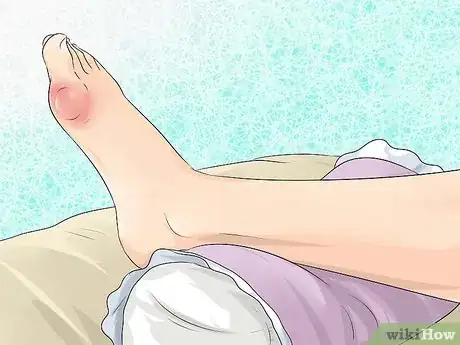
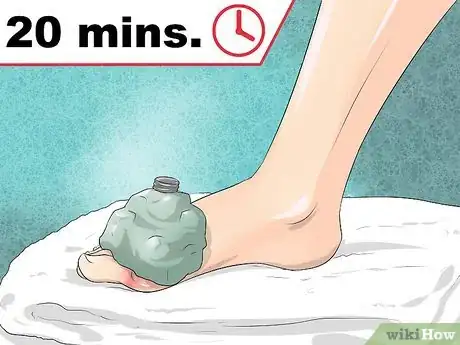
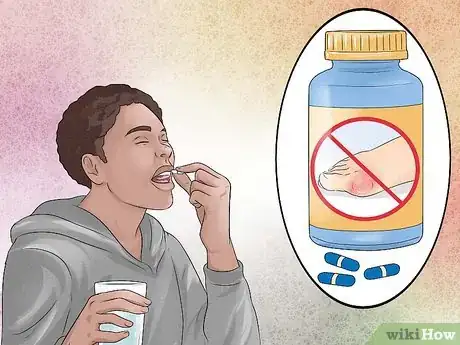
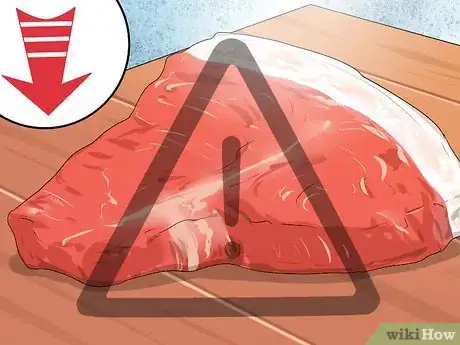
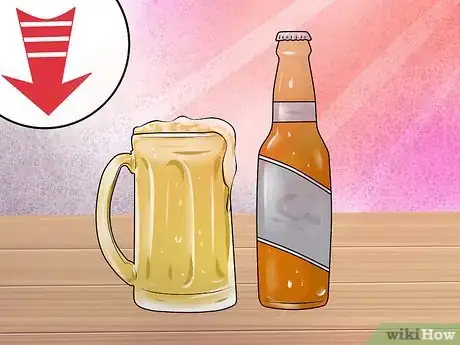
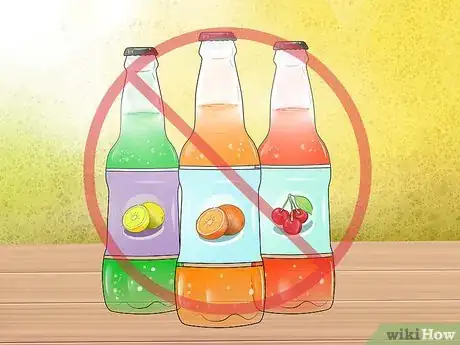
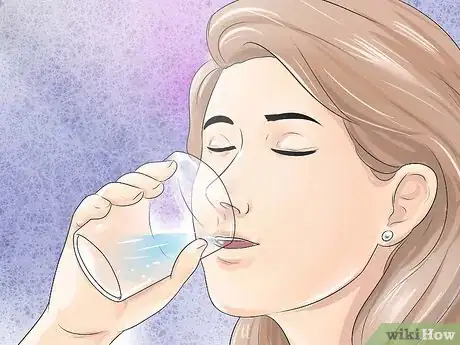
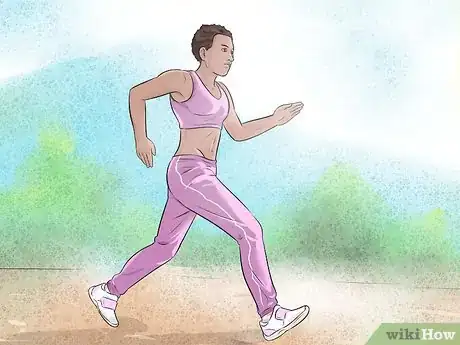
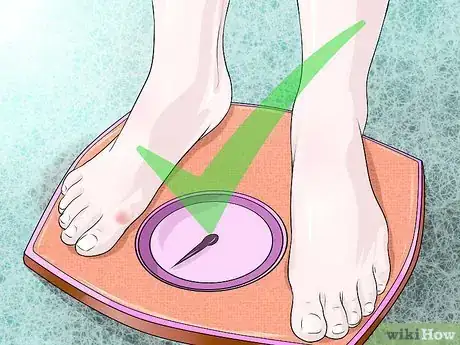
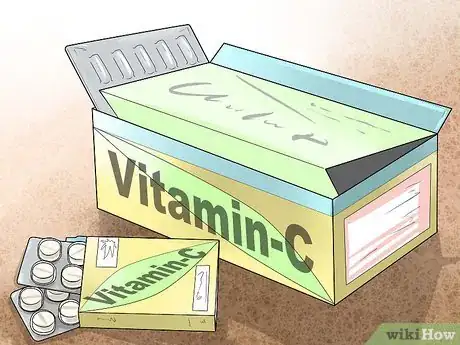
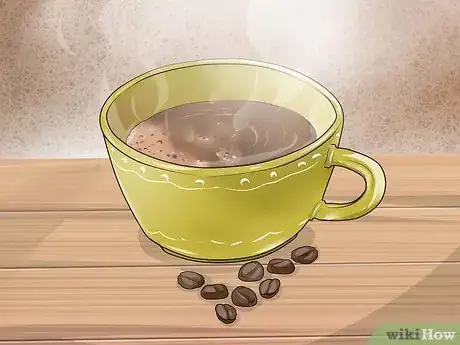
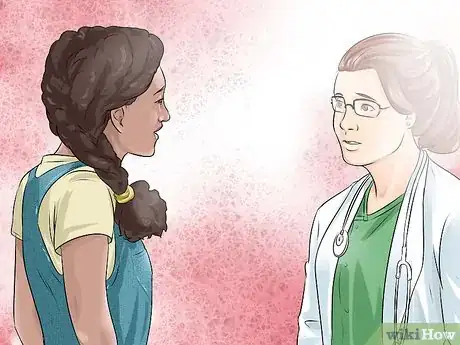
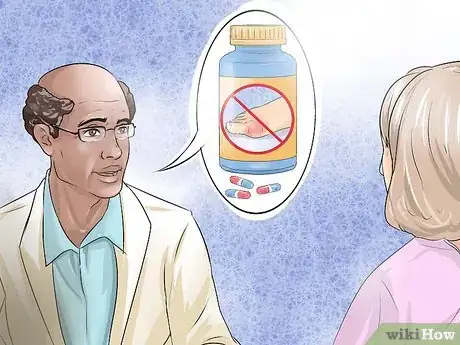
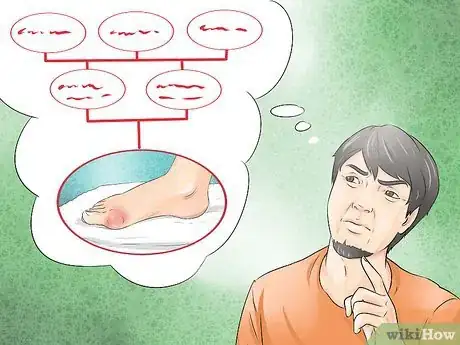

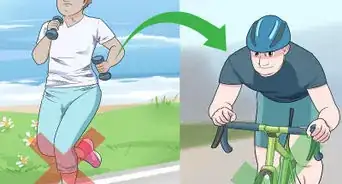

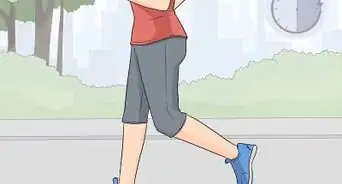
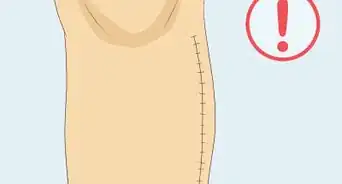

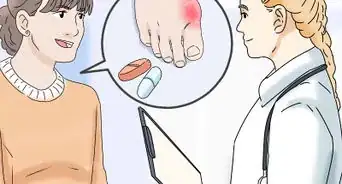
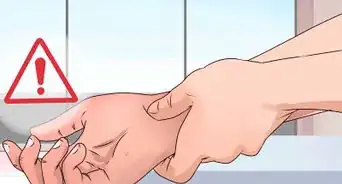
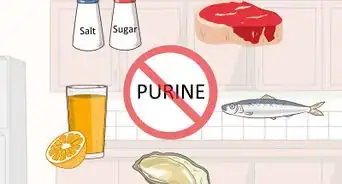

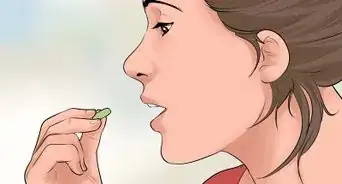
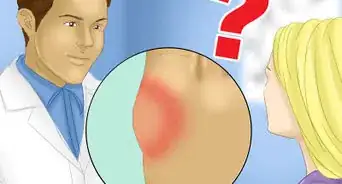

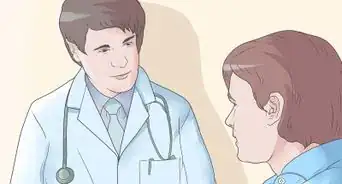










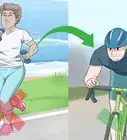

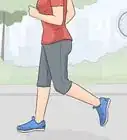




































Medical Disclaimer
The content of this article is not intended to be a substitute for professional medical advice, examination, diagnosis, or treatment. You should always contact your doctor or other qualified healthcare professional before starting, changing, or stopping any kind of health treatment.
Read More...